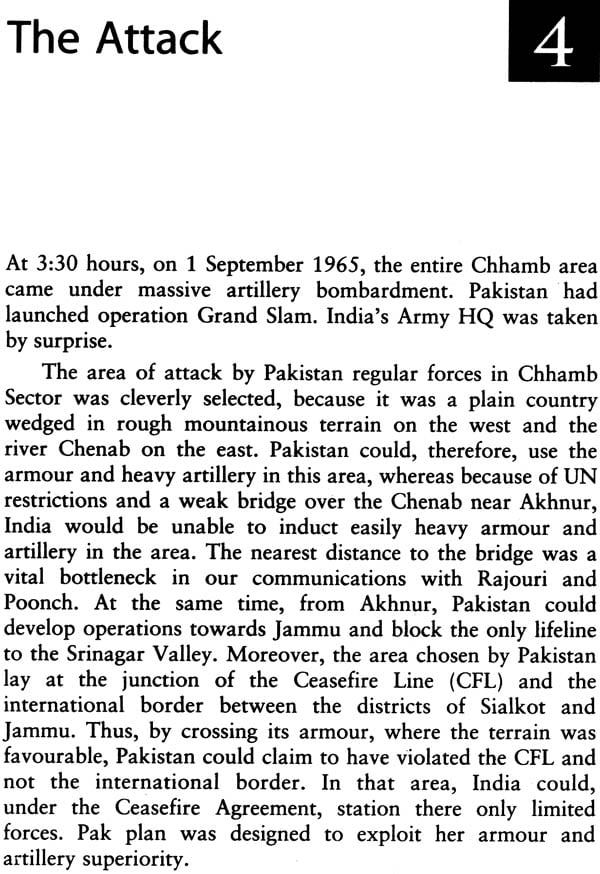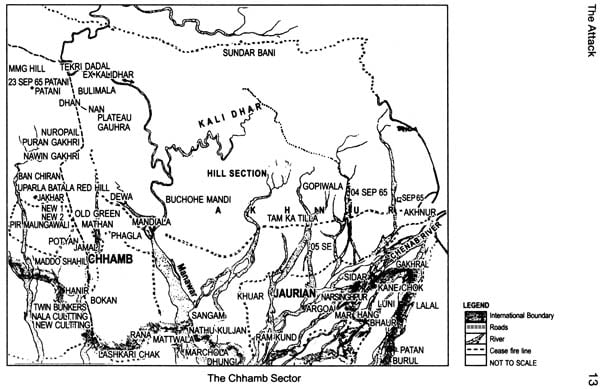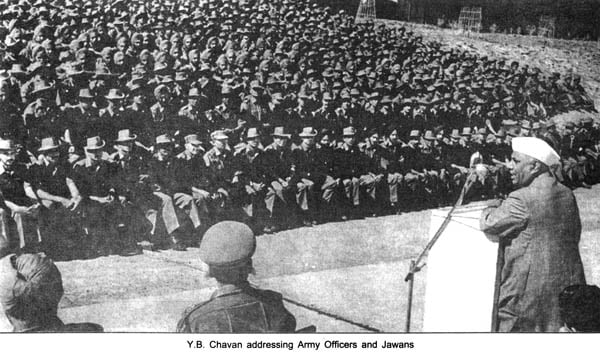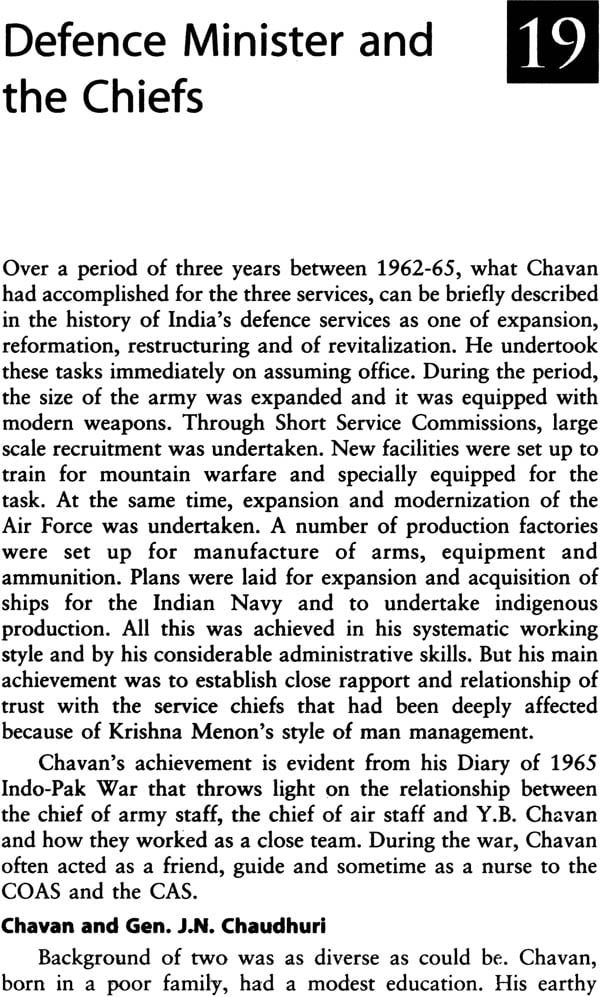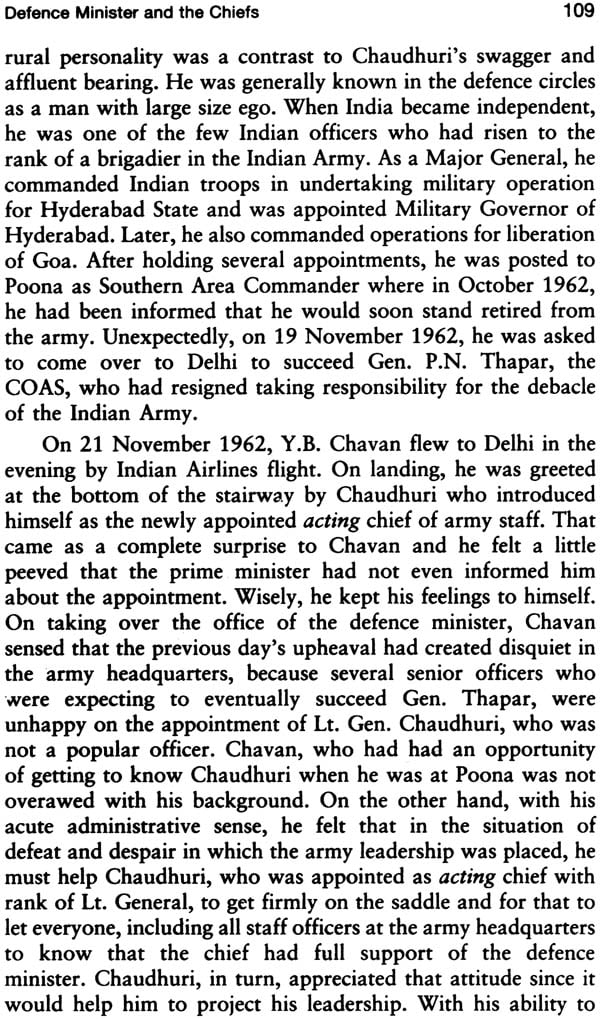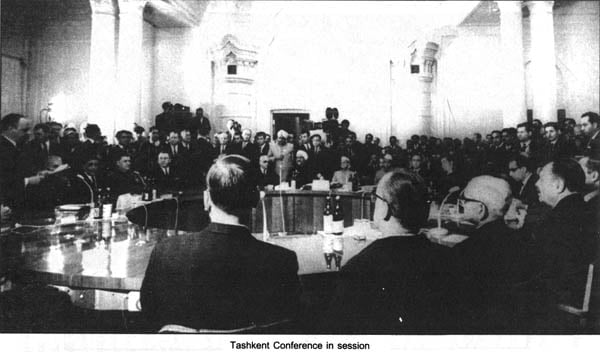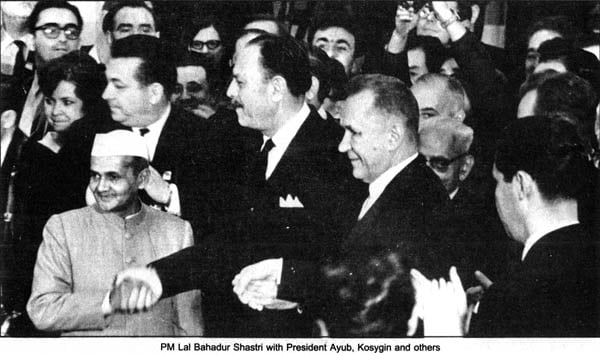
1965 War The Inside Story (Defence Minister Y.B. Chavan’s Diary of India-Pakistan War)
Book Specification
| Item Code: | NAI349 |
| Author: | R.D. Pradhan |
| Publisher: | Atlantic Publishers and Distributors Pvt. Ltd. |
| Language: | English |
| Edition: | 2013 |
| ISBN: | 9788126907625 |
| Pages: | 160 (12 B/W Illustrations) |
| Cover: | Hardcover |
| Other Details | 9 inch X 5.5 inch |
| Weight | 400 gm |
Book Description
R.D. Pradhan joined the Indian Administrative Service (lAS) in the erstwhile Bombay State in 1952.ln 1960 he joined Y.B. Chavan, the Chief Minister of Maharashtra as his Private Secretary. In 1965 he joined the Ministry of Commerce and handled several landmark negotiations. In 1967 he was appointed as India’s Representative in Geneva to UNCTAD and GATT and later joined the UN.
In 1982 he was appointed the Chief Secretary of Maharashtra and in 1985 the Union Home Secretary. In 1987 he became the Governor of Arunachal Pradesh and also acted as Governor of Bihar. He was awarded Padma Bhushan for distinguished Public Service in negotiating peace accords for the Punjab, Assam and Mizoram.
As an author he has to his credit books like Working with Rajiv Gandhi and Debacle to Revival-On Y.B. Chavan’s Tenure as the Defence Minister. He has written several books in Marathi as well.
Currently settled down in Mumbai, he is Vice-chairman of the Nehru Center and a Trustee of the Y.B. Chavan Foundation.
The diary of the 1965 Indo-Pak War recorded by the Defence Minister in his own hand was found in Y.B. Chavan’s papers deposited according to his ‘Will’ in the Venutai Chavan Smarak Library in Karad, Satara district of Maharashtra. Late Shri Shyamrao Pawar, a Trustee, made it available to me for publication in a suitable manner. I had reproduced it in my book Debacle to Revival, Y.B. Chavan as Defence Minister 1962-65, published by the Orient Longman (1999).
This publication is not an account of 1965 India-Pakistan War. The author, while familiar with the working of the Defence Ministry, the Army headquarters and defence formations, does not claim any expertise to deal with complex military operations. Deployment of troops and battles have therefore been dealt with somewhat sketchily, with the limited objective of annotating what the Defence Minister-has written in the Diary in his own cryptic style.
During the last four decades, several books detailing the Military Operations have been published by defence officers of India and Pakistan. In describing the course of these events in the Indo-Pak War of 1965, the author has mainly relied on accounts given in The Indo-Pakistan Conflict by Russel Brines; Behind the Scene by Maj. Gen. Joginder Singh and Missed Opportunities, Indo-Pak War 1965 by Maj. Gen. Lachhman Singh. The author has found material available in Capt. Amrinder Singh’s Lest We Forget (1999) and Lt. Gen. Harbaksh Singh’s In the Line of Duty-A Soldier Remembers (2000) of use in checking out material used from three publications mentioned earlier. Author gratefully acknowledges debt that he owes to all these authors.
This book is intended to highlight what is known as the ‘Higher Direction of War’ by the Defence Minister, who enjoyed trust and full backing of the Prime Minister late Lal Bahadur Shastri. For the author that alone is an important reason to publish the Diary. The Henderson-Brook Report of Inquiry into NEFA Reverses in 1962 India-China War had commented that the political leadership did not offer to the Service Chiefs sufficient guidance in shape of what is known in military parlance as ‘Higher Directions of War’. Chavan had described that the main aim of the Inquiry was to learn lessons. 1965 War was a test, whether those lessons had been learnt, and how well? The Defence Minister’s Diary may help military historians to make that assessment.
In order to help reader to follow the course of events, the book is divided broadly in three sections. The first section, Chapters 1-5, briefly describes situation on ground, Pakistan’s intentions and India’s military assessment. Second section contains the Diary of 22-day India-Pakistan War as recorded by Y.B. Chavan. It is presented in two parts. In Part I, Chapters 6-13, it has been reproduced in full, with commentary relating to the military operations and other matters referred to by the Defence Minister while Part 11, Chapters 14-17, contains day-to-day extracts of the Diary relating to the United Nations and other diplomatic interventions. Third section, Chapters 18-22, is an overall assessment of the conduct of war, of relationship between the Defence Minister and the Chiefs, of lessons learnt after the India-China conflict in 1962 and Y.B. Chavan’s reflections on futility of wars to resolve the basic issue that led to the first India-Pakistan war.
I hope that this publication may be of interest to students of military history, officers of armed forces and may be of use to political leaders, who are entrusted with the task of defence and security of India’s borders and decisions relating to war and peace.
1965 Indo-Pakistan War had its origin in what Pakistan regarded as the Kashmir issue. In 1962, when China attacked from the northern borders, Pakistan saw an opportunity to create problems on the Western Front. Pakistan was firmly restrained by the United Kingdom and the United States. On the Chinese declaring unilateral ceasefire both offered military assistance to India. That had upset President Ayub, and Pakistan started strong propaganda against the massive arms aid to India.
India’s position on Kashmir was made clear at the beginning of 1964 by the Indian representative in the UN Security Council. He stated that, “The threats of violence which have been emanated from Pakistan must cease.” Then he added, “Once better atmosphere prevails, it would be possible-we are prepared to discuss with Pakistan all our outstanding differences.” In December 1964, the Home Minister, Gulzarilal Nanda, declared in the Parliament political measures which would put the state of Jammu and Kashmir on par with the other Indian states under the Constitution. These measures included legal powers to enable Government of India to impose the President’s Rule.
After this, President Ayub and Pakistan Government started preparations for armed conflict with India. Pakistan developed a four phase strategy to capture Kashmir valley by force. The first consisted of a ‘probing encounter’ in some place of Pakistan’s choosing; the second, an all-out but disguised invasion of Kashmir. The third was a full-scale army assault by the Pakistan Army in the Chhamb Sector to cut off the Indian supply line to Jammu and Kashmir and finally, a massive lightning armoured attack to capture Amritsar and as much of other Indian territory as possible, to be exchanged eventually for Kashmir.
The first operation, code-named The Operation Desert Hawk was launched early in 1965 in the Ram of Kutch. On the outbreak of the conflict Harold Wilson initiated moves to secure ceasefire and eventually the matter was referred to arbitration. That set the stage for the second phase to launch a guerrilla type operation in Jammu and Kashmir, named Operation Gibraltar.
On failure of Operation Gibraltar, President Ayub Khan egged on by Zulfikar Bhutto, his Foreign Minister, decided on military option. On 29 August he sent a top secret order to his Army Chief General, Mohammed Musa:
1. ... to take such action as will defreeze Kashmir problem [sic], weaken India’s resolve and bring her to the conference table without provoking a general war. However, the element of escalation is always present in such struggles. So, whilst confining our actions to the Kashmir area we must not be unmindful that India may, in desperation, involve us in a general war or violate Pakistani territory where we are weak. We must therefore be prepared for such contingency.
2. To expect quick results in this struggle, when India has much larger forces than us, would be unrealistic. Therefore our action should be such that can be sustained over a long period.
3. As a general rule, Hindu morale would not stand for more than a couple of hard blows delivered at the right time and the right place. Such opportunities should therefore be sought and exploited.
The operation was code-named: Operation Grand Slam.
| Author’s Note | xi | |
| Preface | xv | |
| Prologue | xvii | |
| SECTION I | ||
| 1. | A Momentous Decision | 3 |
| 2. | Backdrop to Operation Gibraltar | 5 |
| 3. | Geographical Features and Indian Army’s Appreciation | 9 |
| 4. | The Attack | 12 |
| 5. | A Defence Minister’s Diary | 14 |
| SECTION II | ||
| Part - I: military operations | ||
| 6. | Surprise: Pak Offensive | 21 |
| 7. | Operation Riddle: Counter Offensive | 32 |
| 8. | Of Cowardice and Panic | 39 |
| 9. | Turning the Corner | 45 |
| 10. | The Stupid Incident | 54 |
| 11. | Stepping Up of Pressure | 57 |
| 12. | Retreat to the Beas | 62 |
| 13. | The Chinese Checkers | 65 |
| Part-II: Un & Other Diplomatic Interventions | ||
| 14. | Last Phase | 77 |
| 15. | War & Diplomacy | 85 |
| 16. | U Thant’s Diplomacy | 91 |
| 17. | Ceasefire Drama | 99 |
| SECTION III | ||
| 18. | Preparation for Role | 103 |
| 19. | Defence Minister and the Chiefs | 108 |
| 20. | Higher Direction of War | 119 |
| 21. | A Futile War | 125 |
| 22. | Future of India-Pakistan Relations: Chavan’s Reflections | 128 |
| Annexure: Statement by the Defence Minister Regarding the NEF A Enquiry | 130 | |
| Index | 139 | |
| List of Illustrations | ||
| Captured weapons and ammunitions being shown to Defence Minister | 68 | |
| Captured weapons and ammunitions being shown to Defence Minister | 69 | |
| Defence Minister with Air Officers and Gnat that shot down Pakistan’s F-I04 | 70 | |
| Y.B. Chavan addressing Army Officers and Jawans | 71 | |
| Defence Minister visiting Front with COAS | 72 | |
| Y.B. Chavan with Jawans | 73 | |
| Pak’s Patton Tanks captured in Khemkaran Sector | 73 | |
| At dinner hosted for the Chiefs: (left to right) | ||
| Air-Marshal Arjan Singh, Gen. ].N. Chaudhuri, C. Subramaniam, Admiral D.S. Soman | 74 | |
| President Ayub greeting PM Lal Bahadur Shastri | 121 | |
| Tashkent Conference in session | 122 | |
| PM Lal Bahadur Shastri with President Ayub, Kosygin and others | 123 | |
| PM Lal Bahadur Shastri signing the Agreement with | ||
| Y.B. Chavan by his side | 124 | |
| List of Maps | ||
| The Chhamb Sector | 13 | |
| Pakistani Thrust and India’s Counter-thrust (Western Sector) | 30 | |
| The Western Front | 31 | |
| Pak Offensive Plan-Khemkaran Sector | 44 |
